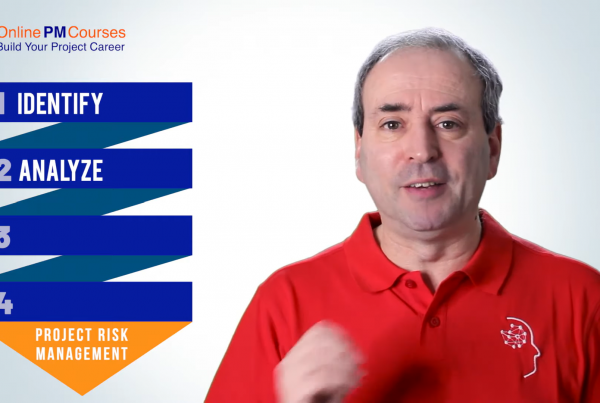Starting A Project The Right Way
THE Game of Life. Have you ever played that game? I haven’t yet, but the name is very similar to how we execute on new ideas and initiatives – it all starts with an idea.
In all walks of life, a strong start can significantly increase the chances of achieving success. From tall buildings to a project team, everything requires a strong foundation, and managing projects is no different.
“Begin well to end well”
In order to get the right envisioned outcome, projects need to start with clear goals and a motivated team. However, if projects are not “initiated” correctly, there is a risk with getting off-course and ending up with the wrong result.
Initiation is the first phase of the project life cycle and is often considered the most important. As the name suggests, initiation is where the entire process of defining a project starts.
Before getting into the details of the project initiation process, it’s best to highlight the five phases of project management, which will follow on from this overview. You can read through each to ensure you understand what steps are required to ensure project success.
The five phases of the project life cycle are:
- Project initiation
- Project planning
- Project execution
- Project review and control
- Project closure
What is project initiation?
Project initiation is the first phase of the project management life cycle and in this stage, businesses decide if the project is needed and the return on investment (ROI).
The two metrics that are used to determine the expectations from a project are the Business Case and Feasibility study.
Why is it important?
- It helps clarify the required investment to a project (resources, budget, etc) and clear objectives to ensure everyone stays on the same page in terms of how the project should proceed.
- The initial high-level planning for a project happens in this phase. While there will be multiple checks during and after execution to prevent miscommunication and to ensure the project stays on track throughout its course, without proper project initiation, precious time and resources will get wasted (totally undesirable).
- Effective project management enables you to ensure tangible benefits while delivering ‘value’ to the customer. Having a clear objective (or scope) helps you achieve all this.
Project initiation establishes what a project will deliver while it is in progress and once it is completed. It also defines a high level plan and timeframe for what resources, finances, etc, will be required. The purpose of project initiation, in essence, is to get all stakeholders interested in and excited about a project.
What is the project initiation process?
Having established what project initiation is and why it is important, we will break down the key steps in how we initiate projects.
1. Business case
The business case is an important document that explains how a project’s goals align with the company’s long-term plans. This document explains why the company should spend its resources on a specific project.
A business case does not talk about any technical details of the project, but focuses solely on the business aspects. It is created to ensure Senior Stakeholder buy-in to approve a project and answer any questions around possible financial and business-related risks.
The business case should be persuasive, especially when it is being used for a marketing-oriented project. A good business case is instrumental in a project gaining acceptance from higher management.
2. Feasibility study
After the approval of the business case, the next step is to determine the likelihood of the project’s success after considering all factors. The feasibility study identifies the high-level constraints and assumptions of the project to determine if the project and Business has the impetus to go through with the project and achieve its goals.
Cost is among the primary considerations of any project and the project manager is responsible for overseeing and controlling it. It is also important to perform a Return on Investment (ROI) analysis that shows the expected result and overall benefit to the organisation. Additionally, it should be made clear if there is sufficient manpower available or arrangeable to take on the project.
3. Project Management Plan
The Project Management Plan is perhaps the most comprehensive and important part of the project initiation process. It identifies the scope/objective, team members, and the possible timeframe of the project.
The PMP is, in some ways, the first document of the project that identifies the necessary details like the goals and the constraints of the project. It also identifies the project scope and lists the required resources for the completion of the project.
This is the stage at which KPIs will be defined for measuring project success. Often, breaking the larger project down into smaller sub-projects and setting timelines will also be looked at during this stage.
4. Identify Stakeholders
Communication and negotiation are a huge part of effective project management and a large part of a project manager’s time is usually spent dealing with stakeholders. PMBOK (Project Management Body of Knowledge) identifies stakeholders as “anyone who can be influenced or has an influence on a project”. Project stakeholders can either be internal or external and each type has its own communication requirement.
It’s the responsibility of the project manager to ensure the means and frequency of communication with each stakeholder according to their influence and interest in the project.
A common practice is to maintain a stakeholder register or a stakeholder map to decide the frequency and means of communication for each stakeholder according to their influence and interest in a project.
A simple rule of thumb is this: Communicate early and often. No one likes to be taken by surprise or participate in a discussion that lacks an agenda.
5. Establish a project working group
No project can be started without a project team. Assembling a working project team and assigning members roles and responsibilities is a vital part of the project initiation phase. Assigning roles and responsibilities early on ensures the overall accountability of the entire team and can help you as a manager in the later phases of the project life cycle.
6. Final review
Finally, it’s a good practice to review the entire project initiation stage to ensure nothing was missed. In later stages, you’ll continue reviewing your work as monitoring and controlling is another key aspect of the project management life cycle.
It is also important to ensure Sponsorship is confirmed for the Project and sign-off of the Project Management Plan to confirm commitment to commence.
What is the next step after project initiation?
Project initiation is followed by project planning. And then execution, monitoring and control, and finally, closure.
This is the textbook process (by phases) of project management.
Project planning is what happens after a project receives approval and is ready to commence. Without a doubt, a project plan will contain many of the components of a Project Initiation Document (PID) but will deal with them not as a project proposal but as a working plan.
Furthermore, a good project management tool goes a long way toward ensuring all the requirements of a project are managed well. A variety of options are available and this, coupled with in-depth reporting capabilities, would be a great add-on.
.








Recent Comments